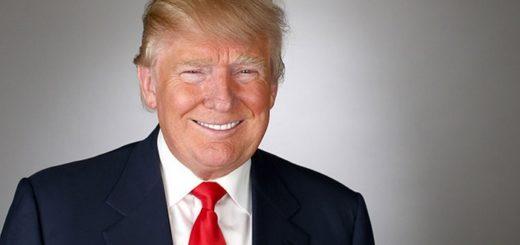ZIONISTS Running EU Want Digital EURO as ZIONIST Infested Federal Reserve Designs Digital $
Europe’s Central Bank Moves Toward Introducing Digital Euro
0868October 2, 2020

(Associated Press) With consumers increasingly using cashless ways to buy things, the European Central Bank on Friday took a step closer to issuing a digital version of the euro currency shared by 19 countries, saying it had to be ready to launch digital money if a changing world requires it.
The central bank issued a comprehensive report outlining the reasons why it might need to take the step. The ECB also said it would hold public consultations on the idea with citizens, academics and bankers.
It said no decision has been made, and that any digital euro would complement cash, not replace it. The consultations will start Oct. 12.
“The euro belongs to Europeans and our mission is to be its guardian,” said Christine Lagarde, ECB President. “Europeans are increasingly turning to digital in the ways they spend, save and invest. Our role is to secure trust in money. This means making sure the euro is fit for the digital age. We should be prepared to issue a digital euro, should the need arise.”
A digital euro would be different from current cashless payment systems run by the private sector because it would be official central bank money – trustable, risk-free and likely less expensive to use. A central bank digital currency could also be used offline, for instance, to transfer small amounts between individuals using digital wallets on their smartphones and a Bluetooth connection.
The use of cash is dwindling in some countries, led by Sweden, where most bank branches no longer handle cash and shops, restaurants and museums accept only cards or mobile payments. Additionally, the pandemic has led to an increase in touchless, non-cash ways of paying in shops. Cash still has its adherents because it is convenient and private, and the ECB was at pains to make clear it was not proposing doing away with notes and coins.
The ECB is not alone in studying the issue. China’s central bank is already testing an official digital currency, while the central bank of Sweden says it has initiated a pilot project.
The U.S. Federal Reserve is taking a more long-term view. Lael Brainard, a member of the board of governors at the Fed, said in August that the Fed would need to ask how U.S. law would apply. She said no decision had been made “as we are taking the time and effort to understand the significant implications of digital currencies and CBDCs (central bank digital currencies) around the globe.”
A task force of experts from the ECB and the 19 national central banks of the eurozone noted that as demand increases for cashless payments, there should be a Europe-wide, risk-free digital system. They said the potential launch of global private digital currencies could raise regulatory concerns and pose risks for the stability of the financial system.
Facebook last year proposed launching Libra, a digital currency that would be backed by existing government-issued money. Libra would not be run by Facebook but by a nonprofit association based in Switzerland. Central banks and regulators have raised concerns about privacy, money laundering and consumer protection. The project suffered a setback when high-profile financial companies such as MasterCard and Visa left the project.
The technical basis could be so-called distributed ledger technology, a decentralized way of keeping track of payments, or the existing ECB payment infrastructure, TIPS. The private sector would then develop ways for the currency to be used in practice by consumers.
Fed Designs Digital Currency for Debt Inflation and End of Commercial Banks
Sept. 28, 2020 (EIRNS)—Cometh the hour, cometh the Fed helicopter. Cleveland Federal Reserve Bank President Loretta Mester gave a speech titled “Payments and the Pandemic” on Sept. 23 to the annual Chicago Payments Symposium—Federal Reserve Bank of Chicago, in which Mester was explicit that the Fed is in preparation for creating digital-currency bank accounts for individuals and businesses, and doing away with commercial banking. Mester was following up the Politico August interview of senior Fed economists Simon Potter and Sylvia Coronado who proposed that the Fed create “recession insurance bonds” and credit them digitally to the public in accounts at the Federal Reserve.
Mester said,
“The experience with pandemic emergency payments has brought forward an idea that was already gaining increased attention at central banks around the world, that is; central bank digital currency (CBDC)…. Legislation has proposed that each American have an account at the Fed in which digital dollars could be deposited, as liabilities of the Federal Reserve Banks, which could be used for emergency payments.” This currency would not be anonymous, like cash, but electronically registered to the account owner and traceable in every use to which it gets put. So like the “recession insurance bonds,”
it could also be withdrawn or “destroyed” by the Fed at intervals, for example if not spent. By this Big Brother form of “bank lending,” the Fed could make the entire commercial banking system obsolete, as its studies of CBDC have repeatedly shown, including, recently, the study by the Philadelphia Federal Reserve in July.
But its immediate purpose would be to create rapid inflation and thus reduce the incredible burden of debt ($80 trillion in the U.S. economy as a whole, plus derivatives contracts) which has exploded due to central bank policy since the 2008 collapse. This is what then-Bank of England Governor Mark Carney was talking about when he proposed a global central bank digital currency to replace the dollar, at the August 2019 Jackson Hole, Wyoming bankers’ conference.
Mester indicated some scope of the Fed preparations: “The Federal Reserve has been researching issues raised by central bank digital currency for some time. The Board of Governors has a technology lab that has been building and testing a range of distributed ledger platforms to understand their potential benefits and tradeoffs…. The Federal Reserve Bank of Boston is also engaged in a multiyear effort, working with the Massachusetts Institute of Technology, to experiment with technologies that could be used for a central bank digital currency. The Federal Reserve Bank of New York has established an innovation center, in partnership with the Bank for International Settlements, to identify and develop in-depth insights into critical trends and financial technology of relevance to central banks.”
And the Philadelphia Fed study referred to above, anticipated her remarks exactly. That study also found that following the disappearance of commercial banking, the Fed would use Wall Street investment banks to plan and make investments in the economy.

















